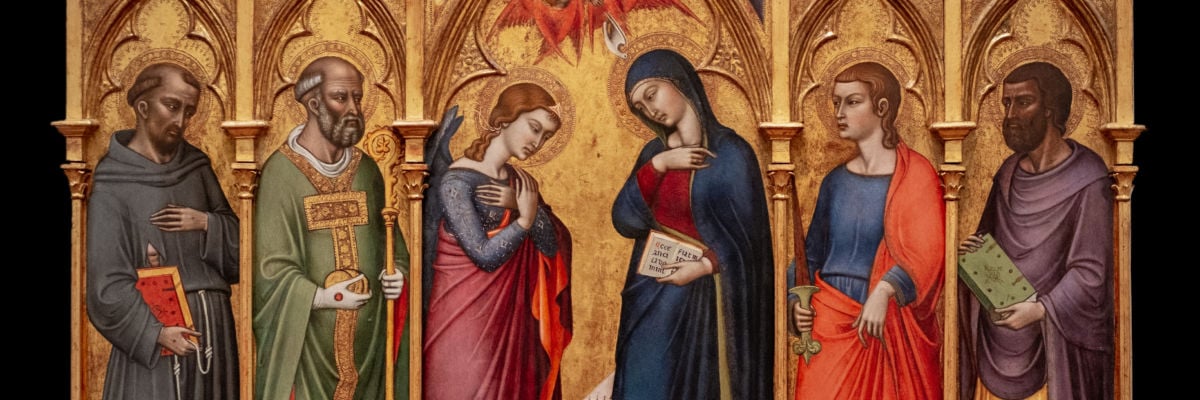
In these past three weeks of Advent, our lectionary readings and prayers have largely focused on the Second Coming, the second advent of the Lord, when he shall come to judge the quick and the dead. I have often suggested that this makes sense because if the Lord came once, he can come again, and so preparing for a remembrance of the first advent is also useful preparation for the second.
One of our more memorable Advent hymns takes up this theme: “O come, o come, Emmanuel.” The verses of this carol are an English paraphrase of an old series of liturgical texts called the “great O antiphons.” An antiphon is just a short verse of prayer that is said before and after a psalm or a canticle at the daily office. And the great O antiphons are said in the seven evenings leading up to Christmas Eve. So, at Evening Prayer, beginning on December 17, we start with “O wisdom” and move down the list:
O Wisdom
O Adonai
O Root of Jesse
O Key of David
O Morning Star
O King of the Nations (that’s today!)
O Emmanuel
These are all wonderful little pieces of the tradition, and I encourage you to look them up if you have the time, or listen to various musical settings, like my favorite rendition in German by Arvo Pärt. They each give expression to one of the Old Testament images of the Messiah, and the theme is clear: do not tarry, but come now and deliver us. The Latin words of these seven antiphons even form a backwards acrostic: Ero cras. I will be here tomorrow.
There is an alternate tradition, which comes from medieval England—and which has been retained in some form in the Ordinariates—that adds an eighth antiphon at the end. Unlike the others, though, which address themselves to the various titles of the Christ, this eighth antiphon suddenly turns to Mary:
O Virgin of virgins, how shall this be?
For neither before thee was any like thee, nor shall there be after.
Daughters of Jerusalem, why marvel ye at me?
The thing which ye behold is a divine mystery.
Rather than destroy the clever Latin acrostic, this one letter just slightly changes the meaning. Instead of “Ero cras”—I will be here tomorrow—it becomes “Vero cras”—truly, tomorrow!
Clever acrostics aside, the last antiphon raises the question: Why, after this extended focus on the coming Messiah, do we all of a sudden turn to Mary?
In a way, our readings today pose the same problem. We have been hearing all about how, at the end of days, Christ will come again in great power and glory to judge the world. We have been hearing from John the Baptist about how we must prepare for the coming storm, for the fire that will destroy all that does not bear fruit. And then today, all of a sudden, we turn to this human moment with Mary and Elizabeth—the two unexpected pregnancies with two different joys.
“How shall this be?” That is the antiphon’s question, but you may remember that it is very similar to Mary’s question at the Annunciation: “How shall this be, since I know not a man?” Joseph makes no recorded response when he is told by the angel in his dream to trust Mary, but surely his thought must be similar: “How shall this be?”
What the angel says first to Our Lady is, of course, what angels always seem to say in Scripture: Be not afraid. But in for Joseph, it’s a little different. Usually, the angel says, “Don’t be afraid” because the natural human reaction to seeing an angel is . . . well, to be afraid. Real biblical angels are not the happy little chubby cherubs you see in modern European art: they’re terrifying, otherworldly beings whose presence is intuitively dangerous. But in Joseph’s case, the command takes a different form: “Do not be afraid . . . to take Mary your wife into your home.”
For Joseph, the vexing thing is not the angel, but the deeply complicated social predicament he’s in—his wife (and it’s important to note that in Jewish law she was his wife) is pregnant, and he knows that the child cannot be his. And yet here the angel tells him that this complicated predicament will, in the end, be the cause not of fear, but of joy and wonder. A virgin has conceived, as the prophet foretold. And the child will be the Son of God.
Once again, Joseph’s angelic visit parallels Mary’s in an interesting way. In both cases, fear is dispelled, and the potentially paralyzing “How can this be?” gives way to trusting wonder.
And in our Gospel today, when Mary meets Elizabeth, the wonder unfolds with the meeting of the unborn John the Baptist. He leaps. Elizabeth rejoices. Mary sings her Magnificat.
This is, in God’s economy, how Christmas works. The fear of judgment, the fear of apocalypse, the fear of the second coming of the Lord, is transformed into wonder and joy at the mystery of the Incarnation.
In this story, the opposite of fear is not confidence, or bravery, but wonder. “O virgin of virgins, how shall this be?” This is a consistent theme through the nativity stories: the wonder of Mary at her pregnancy, the wonder of Joseph at God’s work in Mary, the wonder of Elizabeth at her meeting with the “mother of [her] Lord,” the wonder of the shepherds at the angels’ song.
To wonder at something, in these stories, is to admit that it is a mystery, to admit that it cannot be summarized or explained in a simple way. It just has to be experienced. There’s no substitute for the thing itself and its inexhaustible fullness.
As we enter the final stretch of time before Christmas, this should be our goal: to live not in fear, but in wonder. This means, first, that the advents of the Lord—both the first and the second—are not something to be feared, but to be wondered at; not something to worry us, but something to excite our imagination. There is a practical aspect to this that we do well to remember: If we’re doing something for Christmas that causes more anxiety than it evokes wonder, we should think twice about doing it.
The second thing to say about living in wonder rather than fear is that wonder is not always positive. There is, the Bible makes clear, a kind of wonder at the presence of evil. For many people Christmas is as much a time of sorrow as of joy. This is not new: Mary’s wonder continues from her miraculous pregnancy all the way to the cross, when she wonders—and weeps—at the mystery of evil. By long tradition the Christmas octave includes at least two major feasts of martyrs, St. Stephen and the Holy Innocents. And so it is with us: Evil and tragedy are not something to be explained, or avoided, out of fear, but something to be endured with hope based on the wonder and joy of the gospel.
This is no easy stance either way. I don’t know if it’s harder to recapture the childish wonder of Christmas or to claim the proper Christian wonder in the face of sadness. But we could do worse than look to and Mary and Joseph and Elizabeth as models, and even to call on them for help. God grant that, like them, we may receive the Lord Jesus not with fear—not with calculation and explanation—but with true wonder, love and affection.



